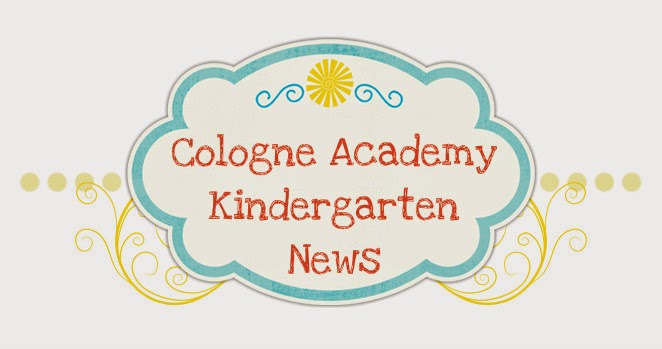Polar Express Pajama Day
When: Thursday, December 21st
Time: In the morning we will be reading The
Polar Express and complete fun learning activities.
Then in the afternoon, we will be watching the movie while snacking on popcorn
and hot chocolate.
Attire: Pajamas!
RSVP: Please send in your blue permission slips as soon as
possible.
On
another note, we are looking for a few items to be donated to the classroom to
help us with our learning activities this week. If you are able to donate any
of the items below, we would greatly appreciate it!
Please check with your child's teacher to see what needs to be donated still.
·
Hershey kisses (milk chocolate - any wrapper color)· Brown paper bags, lunch bag size
· Tootie Frooties or Fruit Loops
· Mini marshmallows
· Mini candy canes
· Styrofoam cups
Friday, December 22nd is
College T-Shirt Day and our December OSA. If you would like to attend our OSA
and are planning to take your kinder home with you after the OSA, please let me
know by noon on
Friday.
- NO SCHOOL from December 25th - January 2nd.
- School will resume on Wednesday, January 3rd.
- No Field trip in January
- Watch for information regarding February's field trip to the Children's Museum.
LITERATURE
Holiday Books!
MATH
During the months of November and December students will work on the following skills:
· numbers 0-20 (ordering, identifying, representing, and writing)
· tally marks
· matching and sorting: shapes
· reviewing 2 -dimensional shapes, shapes in pictures
· reviewing left and right
· patterns :ABC and ABB
· comparing, ordering, and measuring using non-standard units of measurement and with a ruler in inches
Throughout the year students will explore math through open-ended- problem solving journals, math stations, ipads/ipods, IXL, rekenreks, and a variety of math manipulatives.
HANDWRITING/WRITING
Pen Pal Letters
CORE KNOWLEDGE
Native Americans--This unit introduces students to the concept that indigenous people lived on the continents of North and South America long before European explorers visited and settled in this area. Students will learn that there were many, many different tribes of Native Americans, and that each tribe had its own way of eating, dressing, and living, depending on where they lived. Students will learn abou three tribes in particular: the Lakota Sioux of the Great Plains region, and the Wampanoag and the Lenape, both of the Eastern Woodlands region. They will begin to understand how different geographical regions influenced different lifestyles. Students will learn that each Native American group has its own distinctive culture. 